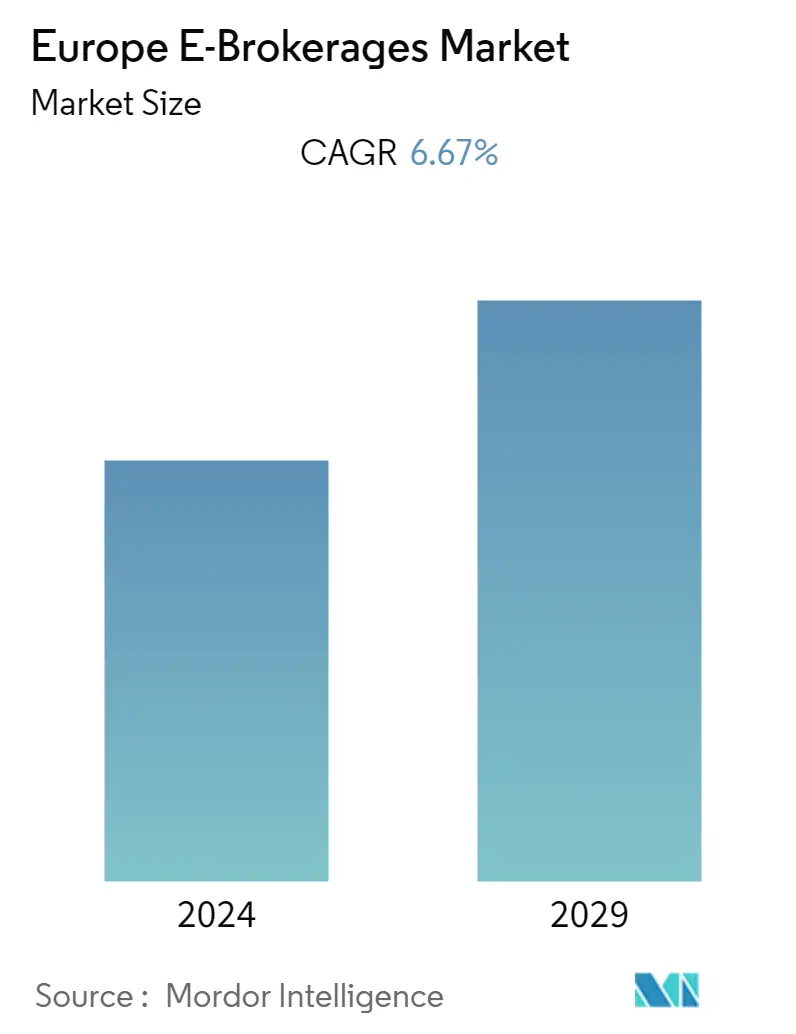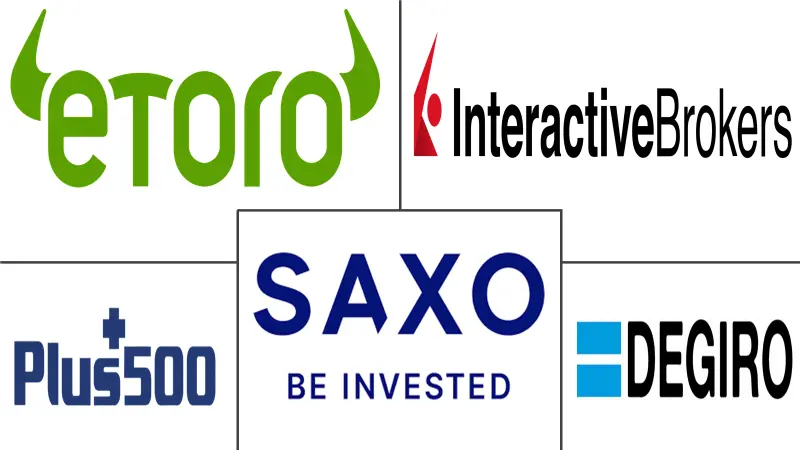Market Size of Europe E-Brokerages Industry

| Study Period | 2020 - 2029 |
| Base Year For Estimation | 2023 |
| Forecast Data Period | 2024 - 2029 |
| Historical Data Period | 2020 - 2022 |
| CAGR | 6.67 % |
| Market Concentration | Medium |
Major Players
*Disclaimer: Major Players sorted in no particular order |
Need a report that reflects how COVID-19 has impacted this market and its growth?
Europe E-Brokerages Market Analysis
The Europe E-Brokerages Market size is estimated at EUR 5.26 billion in 2023, and is expected to reach EUR 7.26 billion by 2028, growing at a CAGR of 6.67% during the forecast period (2023-2028).
Online brokerage is defined as the selling of securities (stocks, bonds, mutual funds, warrants, etc, etc.) on the Internet. The European brokerage market earlier used to be dominated by local banks that served their larger client base and operated using a brick-and-mortar business model initially. Later e-commerce business model was introduced by new age fintech companies by leveraging on the technology and offering services at a very competitive pricing structure. In the present day, both banks and e-brokers are leveraging technology and providing online trading platforms and services virtually. Structural growth drivers like raising fintech services penetration, increasing financial assets and changing investor behavior, and many other factors are driving the growth in the European online brokerage market. The market for online brokerage services in Europe is continually evolving and is intensely competitive. The retail brokerage industry has experienced significant consolidation which is expected to continue in the future and may increase competitive pressures in the industry.
Each country in Europe has a different style of investing and the number of trades executed per account in a year is also different from country to country. The dominant income model of brokerage firms in the Eurozone is based on trade commissions without active monetization of the bid/ask spreads and trading flow. This risk-averse model has mainly to do with regulatory scrutiny and customers that demand high cost transparency. In Europe, there are a number of international brokerage providers which operate with different business models. They tend to have no regional anchoring and often only offer exposure to the financial markets through derivatives such as CFDs without offering their customers the option of physical asset ownership. Due to the different core businesses of these brokerage providers they also tend to have greatly differing costs of settlement and these costs vary across countries.
